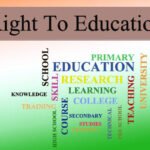The 73rd Republic Day of India will be celebrated on January 26, 2022, for the 73rd time. We are all looking forward to seeing the amazing parades on Janpath in New Delhi, which we were all able to see physically but which only a handful will be able to view owing to the pandemic. In 1965, Hindi has also declared the official language of India on this date.
Feature Image credits: Suchna Vibhag
The Republic Day commemorates India’s independence and individuality. The exhibition of military equipment, the national flag, and military equipment are all key emblems of the celebration. Purna Swaraj, the declaration of India’s independence from colonial authority, was released on this day in 1930 by the Indian National Congress. The new constitution was enrolled under the leadership of Dr BR Ambedkar.
This day is commemorated with great zeal throughout India. It is when we Indians uphold the independence of India’s Constitution. The tricoloured national flag is displayed at all government buildings, schools, and colleges, followed by cultural activities. However, due to the epidemic, the situation is currently different.
Also check out: Republic Day: Great Leaders We Must Remember
The President of India hoists the national flag at India Gate in New Delhi. The spectacular parades take place in New Delhi’s Rajpath. The Indian President leads the parade, which is organised by the Ministry of Defence. Apart from showcasing India’s military might, the event also promotes the country’s diverse culture. The celebration also pays tribute to the martyrs who have given their lives in the service of their country.
The Prime Minister of India pays tribute to the martyrs by placing a ringlet at India Gate’s Amar Jawan Jyoti. A 21-gun salute, national flag hoisting, and the national song follow. The brave soldiers are honoured with the Paramvir Chakra, Ashok Chakra, and Vir Chakra awards. Children and adults who have shown courage in the face of adversity are recognised with awards.
Also check out: 73rd Republic Day: Where does India stand today?
Following that come the gallantry award winners, who salute the President in military jeeps. Following that, India displays its military might. The President of India receives salutes from several regiments during a march past by the armed forces, police, and National Cadet Corps.
When Indian Air Force fighter planes fly above Janpath, the procession comes to a close. The festival is held all across the country. Every year, a live webcast of the Republic Day March is made available to millions of individuals who want to watch the parade on the Internet or on television. The exclusive footage is made available as ‘video on demand’ after the event. Celebrations are also held in all state capitals, though on a smaller scale, where the governor of the state unfurls the flag. District headquarters, subdivisions, talukas, and panchayats all hold similar celebrations. After all of the festivities, the Beating Retreat takes place, formally bringing the Republic Day celebrations to a close. Every evening from the 26th to the 29th, all key government buildings are attractively decked with yellow lights.
Also check out: Top 10 Indian women who dominated the charts in 2021
On the evening of January 29, the third day after Republic Day, the Beating Retreat ritual is held. The drummers also play a solo piece called the Drummer’s Call. The bands return to the stage, performing Saare Jahan Se Achcha, a popular martial tune. The National Flag is lowered and the National Anthem is sung at precisely 6 p.m., bringing the Republic Day celebrations to a ceremonial close.
While our Independence Day remembers our independence from British rule, Republic Day commemorates the adoption of the Constitution. The date was chosen because the Indian National Congress proclaimed the Declaration of Indian Independence (Purna Swaraj) on this day in 1929, rejecting the British Regime’s Dominion status.
India gained independence on August 15, 1947. A few days later, on August 29, a committee was formed to develop a permanent constitution for independent India. The committee’s chairman was Dr BR Ambedkar. The committee wrote the constitution and delivered it to the Constituent Assembly on November 4, 1947. The Assembly met for nearly two years in various sessions before finally adopting the Constitution. After extensive deliberation and a few adjustments, the 308 members of the Assembly signed two handwritten versions of the accord on January 24, 1950: one in Hindi and one in English.
On January 26, 1950, the constitution went into effect two days later. On that day, Dr Rajendra Prasad took office as President of the Indian Union for the first time.
The British colonial Government of India Act (1935) was replaced as the country’s governing document by India’s constitution, which was formally ratified in 1950.
The Preamble to the Constitution of India, a statement outlining the Constitution’s main principles, went into effect on January 26, 1950. The country’s transition to an independent republic was now complete. The Constitution establishes essential rights that all people of this country, regardless of political convictions, should be able to enjoy. It also defines some basic responsibilities for all people of the country.




